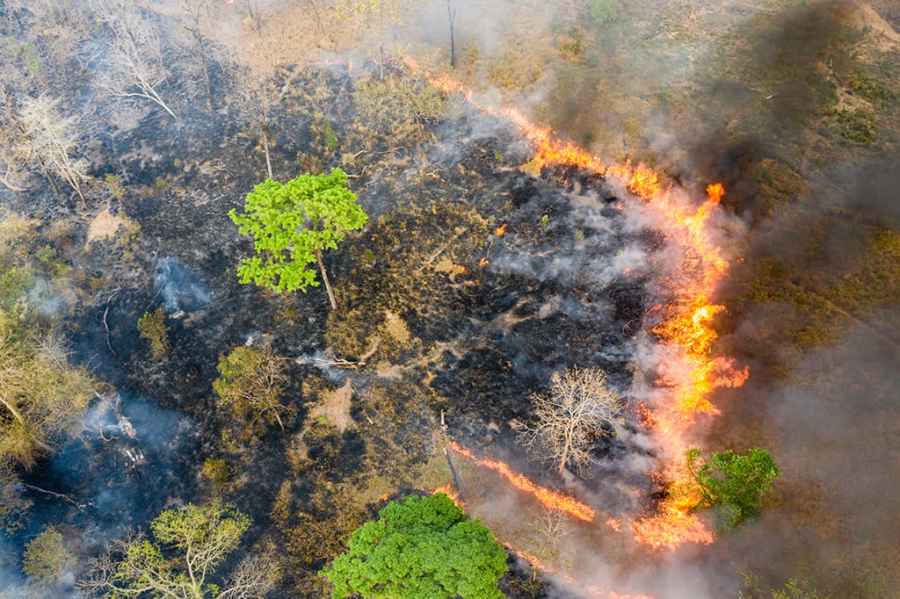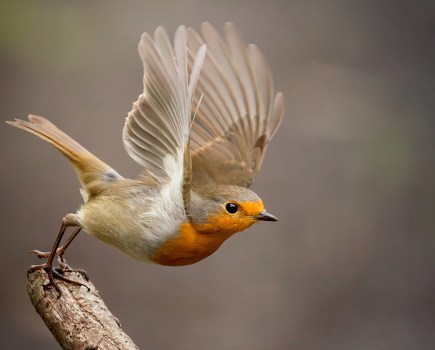Photography is doing a big job in raising awareness of climate change. Graeme Green speaks to four photographers leading the way
Graeme Green
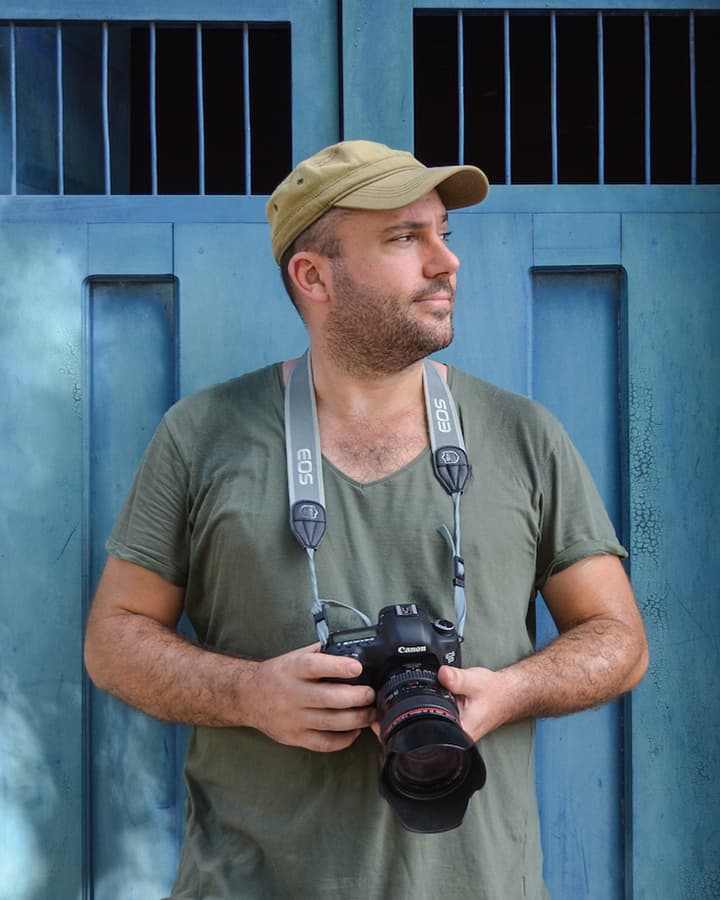
Graeme Green is a journalist and photographer, and founder of conservation organisation the New Big 5 project (www.newbig5.com). See www.graeme-green.com and follow on Instagram @green.graeme.
How do we know the world’s burning? The information’s there to be read in newspapers, magazines, books, scientific journals and online. But it often takes images, captured by people who’ve stood with their cameras in front of fires raging across Australia, California or elsewhere, for us to understand the scale of destruction caused by forest fires and the impact on local people, wildlife and the environment.
Likewise with glaciers or water resources, we can read about percentages, volumes and timeframes, but it’s the photographic evidence that hits home, showing us the scale of disappearing ice or dried-up lakes, and what that means. Photography is vital to our understanding of how our planet is being changed by human-caused climate change.
Scientific facts, journalism and the written word are also essential – in an age of conspiracy theories and online misinformation, they matter more than ever. But from fires to floods, glaciers to coral reefs, it’s photos that can cut through the noise and communicate in a powerful way, conveying the severity of the climate crisis and the urgent need for action.
Climate photography is about far more than documenting changes, though. It’s also about storytelling, digging deep into a situation, understanding the impact of environmental changes to a landscape, ecosystem, community or country, and showing the threats posed to the lives of local people, wildlife and nature itself.
A photographer’s job is also about finding hope and solutions, highlighting how even worse future disasters can be averted if action is taken. It’s a job that comes with risk, from working in disaster zones to the threats from governments, industries or corporations with a vested interest in stopping photographers exposing environmental destruction.
Change is clearly needed. The 2021 United Nations Climate Change Conference, or COP26, is due to be held in Glasgow from 31 October to 12 November, with the UK serving as president; a chance to bring decision-makers together to work towards the goals of the Paris Agreement and the UN Framework Convention on Climate Change.
It might be going too far to say that environmental campaigners are optimistic world leaders will finally take the decisive action the climate emergency requires, having failed to do so for decades.
But the world is watching, and the case for serious action is strengthened by the existence of photography by people like Cristina Mittermeier and James Balog showing the dire state of the planet and the crises already happening in locations around the world, along with warnings for the future if humanity doesn’t change course.
Cristina Mittermeier
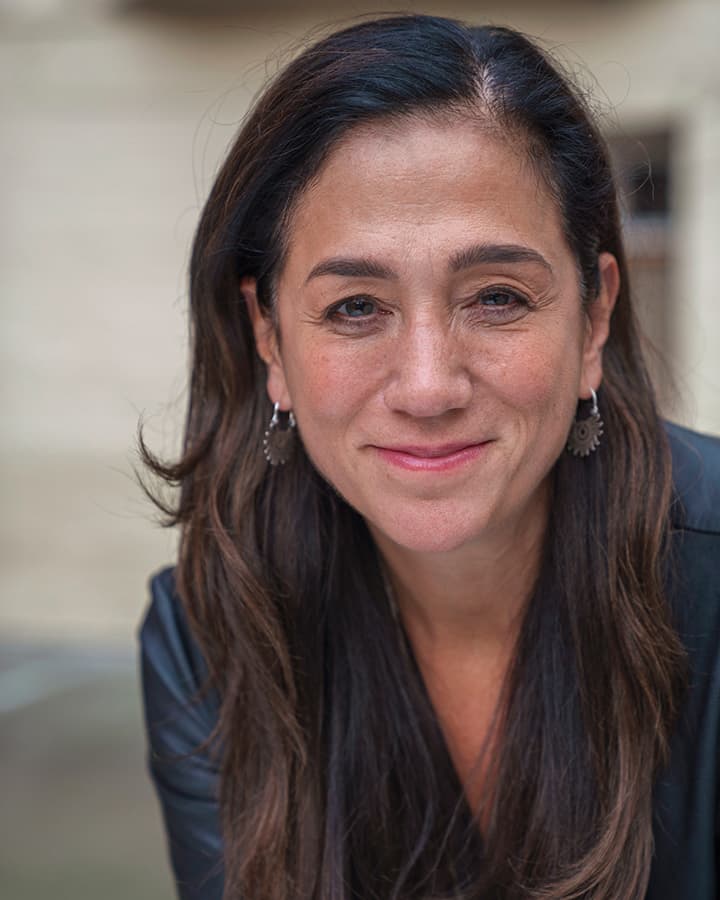
Cristina Mittermeier is a Mexican photographer and film-maker. Her work has appeared in international publications, including National Geographic and TIME. Her books include Amaze and Sublime Nature.
She’s the co-founder, along with partner Paul Nicklen, of SeaLegacy (www.sealegacy.org), an organisation promoting the protection of the world’s oceans through photography, video and storytelling, and Only One (only.one), an environmental conservation organisation and platform.
Visit cristinamittermeier.com and follow on Instagram at @mitty @sealegacy and @onlyone.

Photo: Cristina Mittermeier. A starving and weak polar bear foraging for food on Baffin Island, Canada. Sony A9, 140-400mm, 1/320sec at f/6.3, ISO 500
For the past 20 years, I’ve focused my work on conveying both the beauty and majesty of our planet’s remaining intact ecosystems and the indigenous communities that call them home. In the past ten years I’ve shifted heavily towards documenting the ocean.
Not only am I captivated by how little we understand about its vital function as the most important ecosystem for climate regulation, but I’m also very interested in the communities that live along the edge of the sea. They are the ones experiencing the changes brought forth by climate change first-hand.
My work is an invitation to marvel, learn and understand nature, but most importantly, I see my work as a gateway for people to enter into conversation and become action-takers. I try to tie the narratives of my work to specific calls to action that people can take, either through my own organisation, SeaLegacy, or through the work of other non-profits.

Photo: Cristina Mittermeier. The devastating results of Hurricane Dorian when it descended on Abaco, Grand Bahama in 2019. Sony Alpha 7R IV, 16-55mm, 1/250sec at f/9, ISO 640
There is so much we all can do every day and I want my work to be a portal for others to care. The issue with photographing climate change is that it isn’t an event. Instead, it’s a process. Trying to photograph it is like photographing a slow-moving tsunami. The most impactful images are therefore either the consequences of climate change, like the fires and hurricanes, or the dramatic symptoms of the changes around us.
What happens to ecosystems and wildlife as our planet’s climate become more unstable and unwelcoming to life is not an easy thing to photograph. Yet capturing that drama is an important way to keep the public engaged with the reality of this crisis.
Cristina’s Tips
1. Find the organisations working on issues that you want to connect with and offer your skills as a photographer as a volunteer. Organisations that are working on this enormous crisis need all the visual aids they can get but they can’t always afford it. Become part of the solution by lending your talent as a communicator to those who can make the biggest difference.
2. Even though images of climate change almost always portray cataclysmic scenes of destruction or death, those images still need to be arresting and even beautiful. Focus on finding beautiful light to bring in the audience and allow the viewer to discover the destruction on their own.
A scene that says, ‘Oh, that is a beautiful sunset’ but upon closer inspection reveals the devastation caused by a hurricane can be far more interesting than just showing destruction.
3. Destruction and death do not have to be ‘in your face’. Allowing your viewers to formulate their own conclusions as they ask questions about a scene they’re looking at is more effective than hitting people over the head.
Sean Gallagher
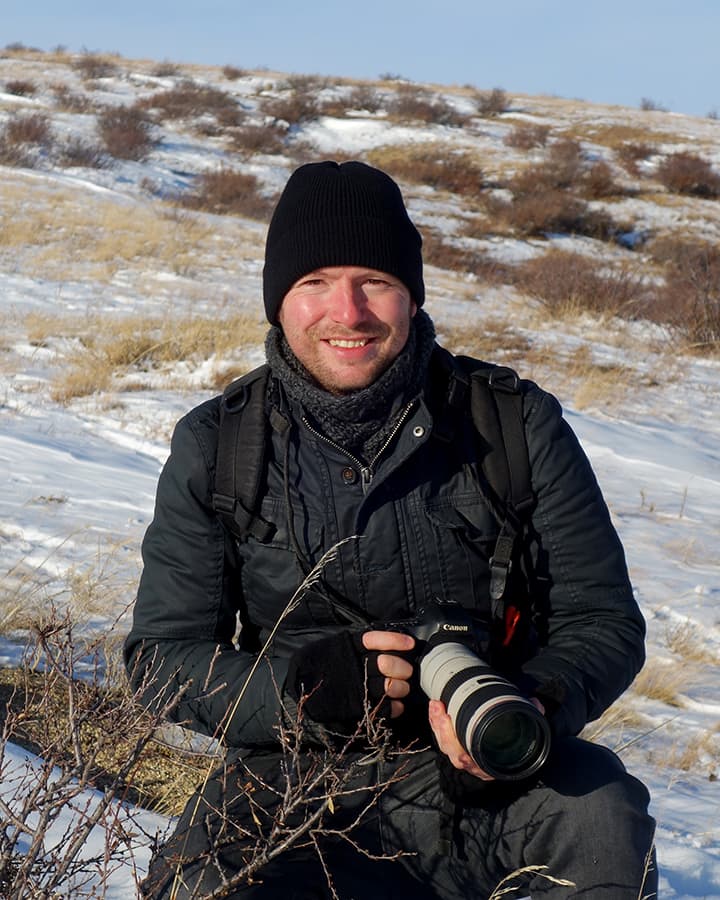
Sean Gallagher is a British photographer and film-maker who’s been working in Asia for more than 15 years. His work specialises in issues surrounding the climate crisis and other global environmental problems for outlets including National Geographic and The Guardian. He’s a Fellow of the Royal Geographical Society. His latest film is Cambodia Burning.
See gallagher-photo.com and follow on Instagram @sean_gallagher_photo.
My work focuses on creating photography and documentary film projects that highlight stories from the front lines of the climate crisis, as well as covering other important and under-reported global environmental issues, such as deforestation, the effects of industrial pollution, biodiversity loss and rising sea levels. I’ve lived and worked across Asia for over 15 years and I’m currently based in Beijing, so my work focuses mainly on the Asia-Pacific region.

Photo: Sean Gallagher. Aerial view of burning land near the Phnom Tnout Phnom Pok Wildlife Sanctuary, in Songkom Thmey District, Preah Vihear Province, northern Cambodia. DJI Mavic 2 Pro (Hasselblad L1D-20C, 28mm), 1/120sec at f/3.5, ISO 100
My latest project, Cambodia Burning, looked at the effects of deforestation and forest fires on the communities of northern Cambodia. In early 2020, I spent three weeks embedded with local conservationists and activists, documenting their work trying to preserve forests in South-East Asia.
The subsequent photographs and short film were featured in publications including National Geographic and the British Journal of Photography. Prior to this story in 2019, I worked on a project documenting how the tiny Pacific island nation of Tuvalu is being affected by rising sea levels. I also spent around three weeks in the country working on this story.
It’s normally my aim to publish my stories with major international publications, in order to increase the reach of the stories I cover and make sure the subject receives as much exposure as possible in mainstream media. I believe photography is incredibly important in helping communicate the causes, effects and solutions to the climate crisis.
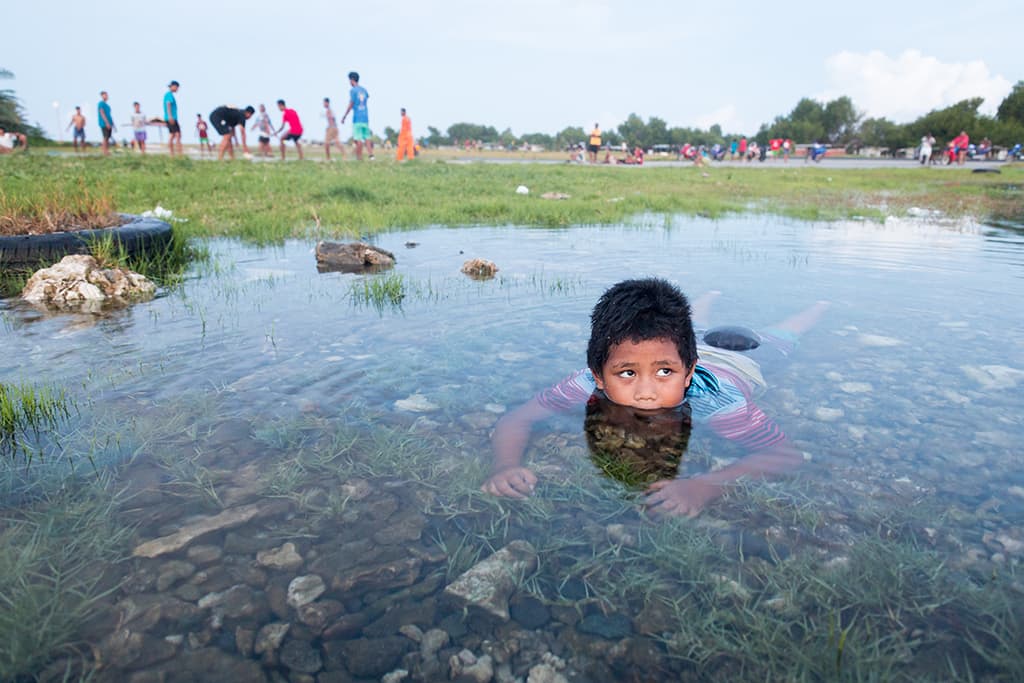
Photo: Sean Gallagher. A young boy swims in a flooded area near the airport runway, in downtown Funafuti, Tuvalu. Canon EOS 5D Mark III, 24-105mm, 1/15sec at f/4, ISO 1600
It’s only through visualising the problem that we can then begin to address the causes and ultimately create dialogue about what the solutions are. Photography has the power to not only show the literal effects of the crisis but also communicate the more subtle effects, including those affecting nature or people.
As a photojournalist, I use storytelling to help people understand the issue I’m covering. I’m always looking for a powerful single image but it’s more important to me to create a series of powerful images that tell the story of the issue. I want to put people on the front lines with me and draw their attention to the people and communities who are being affected, helping them to understand why this story matters and how it fits into the global context of the climate crisis.
Sean’s Tips
1. The climate crisis is affecting all of us now. Look at your local community and try to connect what is happening locally to you to what is taking place on a global scale.
2. Focus on telling people’s stories. The scale of the climate crisis can often feel so big, so it’s useful to personalise your storytelling and focus on local people and communities who are being affected.
James Balog

James Balog is an American photographer, film-maker, and founder and president of the Earth Vision Institute (earthvisioninstitute.org) and Extreme Ice Survey (extremeicesurvey.org). He’s famous for his work on the relationship between humans and nature, including the impacts of climate change on the world’s glaciers.
His films include Chasing Ice and The Human Element, with books including Survivors, Ice and his latest book, The Human Element. jamesbalog.com, Instagram @james_balog.
I’ve been looking at human-caused environmental change for 40 years. Within that framework, I started working on climate and looked at glaciers in many different places, which became the Extreme Ice Survey. I put out 25 timelapse cameras to look at glaciers and how they were changing on a daily basis in different countries including Alaska, Greenland, Iceland, the Antarctic peninsula and right by Mount Everest.
At one point, the camera network was up to 43 cameras. The archive of photos now totals 1.36 million recorded frames. When I visited locations, I was also doing conventional single-frame photography and trying to create something visually interesting to look at the forms and behaviour of glaciers.

Photo: James Balog. A prescribed burn near Fort Providence, Northwest Territories, Canada. Nikon D810, 70-200mm, 1/4000sec at f/8, ISO 1600
I’ve done a lot of repeat photography, where I’ve revisited the same location over and over again to see how the landscape is changing in France, Switzerland, and British Columbia.
I also made the film Chasing Ice, and more recently The Human Element, which is about seeing people as a natural part of the world’s system. I see us as an element among Earth, air, fire, water, plants and animals. I don’t see ourselves as separate from that wider system.
The Human Element film and book covers the changes in air itself, floods, wildfires, thinking about how we’re looking at fuel. None of us are separate from the system. We’re all benefiting from burning fossil fuel.
It’s vital that humanity tells itself a new story. If you keep telling yourself the same story of ‘Hey, we have to burn every molecule of fossil fuel that’s in the ground in order to have a full and prosperous life,’ you’re always going to be self-defeating. Photography and words have the capability of helping humanity project a new path forward.
The trickiest part of the whole quest is to find a way to create images of these things that’s interesting. It’s one thing to just make a simple explanatory documentary photograph of a situation. But it’s another thing to make it provocative and engaging. With a lot of environmental stories, the pictures can be really dark, ugly, nasty and often bloody.
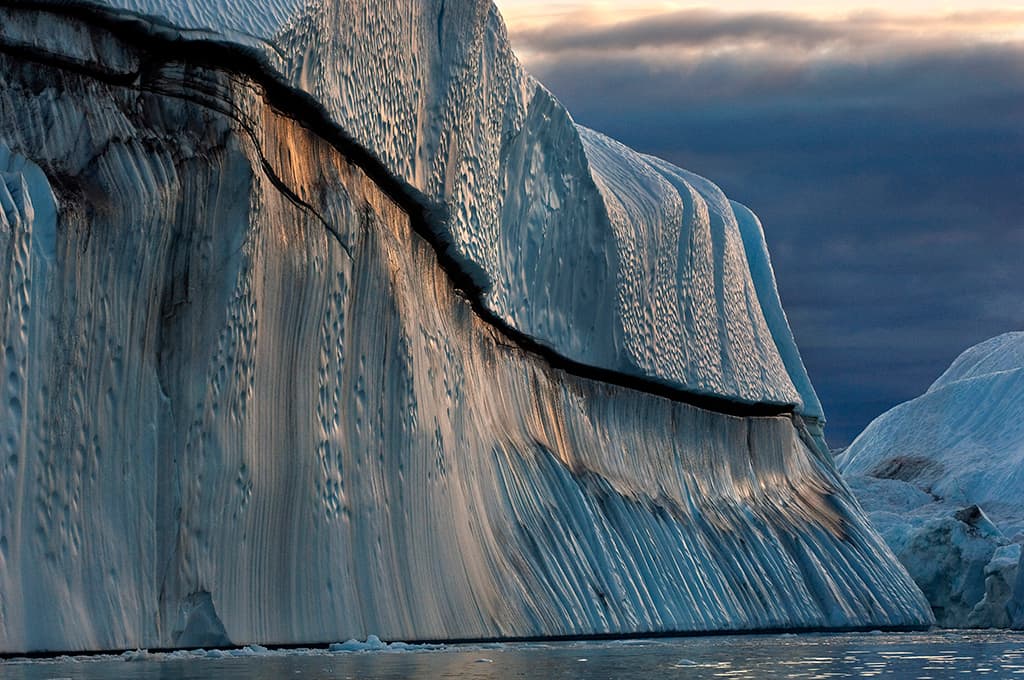
Photo: James Balog. Icebergs that have rolled over and been scalloped by waves metamorphose into fantastic shapes. Ilulissat Isfjord,Greenland. Nikon D2X, 70-200mm, 1/1250sec at f/4.5, ISO 320
But it’s hard to hold an audience with that kind of imagery. You’ve got to find the beauty or the symbolism within a situation that can carry the ideas you feel need to be carried. A lot of my work has actually not been documentary, but it’s been a symbolic expression of how I see the world or how I feel about the world.
James’s Tips
1. Focus on relatively narrow aspects of a broader situation. You can’t photograph the whole situation. You need to find a doorway into the broader situation. The doorway has to be fairly specific. You have to look for that.
2. Be knowledgeable. It’s not enough to be a clever person with a camera or a cinematic set-up and go out and record audio and digital cinema. You have to know what you’re looking at and why you’re looking at it, and also understand how you think about that subject.
3. Express yourself. This sounds abstract but it’s vital to look inside yourself and let the inside of yourself come out from that dark unconscious place that we all have, to find something that really latches onto you. An awful lot of picture-making is superficial.
It’s not an expression of something that’s vibrating in someone’s unconscious or subconscious. The secret sauce that’s so vital is you need to have some sort of inner connection to these outer things. That’s what makes good art. I don’t see myself as a documentary photographer.
I see myself as an artist expressing through the real world some of the inner conditions that I feel. My inner condition is somehow merging with what’s happening in the bigger world. If some pictures work, they work because of the inner and outer coming together. A lot of people don’t have that connection.
Vlad Sokhin

Vlad Sokhin is a Russian-Portuguese photographer and videographer, covering global environmental, health and human rights issues. His work’s appeared in publications including National Geographic, BBC and GEO, and he’s worked with organisations including UNICEF, Amnesty International and ChildFund.
He’s represented by Panos Pictures and has a new e-book, called Warm Waters. See www.vladsokhin.com and follow on Instagram at @lens_pacific.
My work for most of the last decade has focused on the Pacific Ocean and a little bit in the Arctic. The project I’ve been working on, Warm Waters, is about climate change and global warming in this big area that hasn’t been really well-covered, from northern Alaska to New Zealand, including many of the small islands and territories.

Photo: Vlad Sokhin. An Iñupiat girl Amaia, 11, standing on a ice floe on a shore of the Arctic Ocean in Barrow, Alaska. The anomalous melting of the Arctic ice is one of the many effects of global warming. Fujifilm X-Pro2, 16-55mm, 1/8000sec at f/2.8, ISO 100
I covered indigenous villages in Alaska, then to Russia, the Kamchatka Peninsula and Aleutian Islands, Micronesia, Papua New Guinea, Vanuatu, all the way down to New Zealand, covering nations and territories suffering first-hand from the impact of climate change.
I focus on people and nature. I try to give a voice to local populations, showing their daily lives and their struggles. I also show scientists that work in that area in research labs, and marine life or people who study corals – a little bit of everything.
Climate change is not just about rising water. There’s illegal logging, which is impacting habitats of local people, coral bleaching, coastal erosion, permafrost… and huge cyclones that destroy half of a country. I go to places like Vanuatu or Fiji after they’ve had cyclones, and I photograph the aftermath.
It’s hard to say what impact the work has. Photographers generally need to remember that everyone has their own place in society on this planet. With climate change, some people are lawmakers who can do something that changes the world.
Some people are scientists. For me, photographers are pioneers who go to a place to take the pictures, and shows this message to a wider audience as journalists or documentary-makers.
This is my role. I show these photos in publications or in exhibitions in countries around the world so people can see what is happening. Climate photography isn’t just storytelling. You can tell a story but if your photography isn’t great, people won’t be interested. If you’re a good photographer, you might know how to tell a story but you don’t know how to connect with people or to gain access.
All this is important. I go to a place and try to be like the people there. I try to learn a bit of the language and a bit about the culture, and then, if you have photography skills, you can tell the story.
Vlad’s tips
1. Study nature. Don’t just study the light or when to take a better picture, but the behaviour of the nature, like a hunter studying the habits of an animal. If you want to take a great photo, you can learn great photo skills, but it’s not enough. It’s just the basis on which you need to build your house.
When I go to islands to photograph rising sea levels and how it affects local people, I study the time of the year when the ocean is highest. I study moon cyclones and tides, new moons, I call people, and then I plan. Flights are expensive, so when I arrive, I arrive at exactly the right time. Its Mother Nature, so maybe nothing happens, but you have to study to increase your chances.
2. Tell your own story. Don’t copy others and don’t accept the media agenda that’s always showing doom and gloom, destruction and how bad climate change is. Have your story balanced. It’s not just about destruction but about the future of nature – you can have a message about how we could easily lose this beauty.
3. Give voice to as many people as possible. It’s important to give voice to people who not only suffer, the victims of climate change, but also the people doing something positive about it: climate warriors, people who try to protect their homes, policy-makers, scientists… Show as many angles as possible in your work.
Further reading

